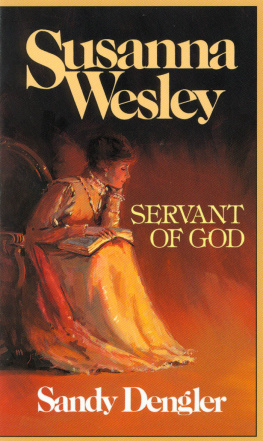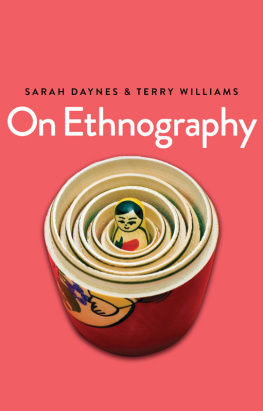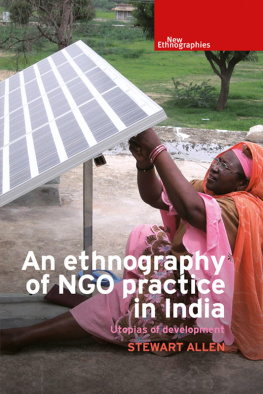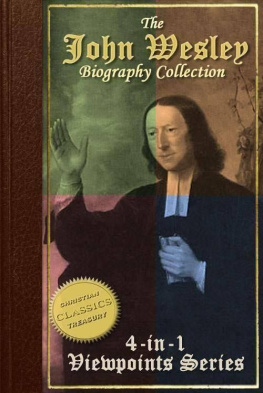FOR INFORMATION:
SAGE Publications, Inc.
2455 Teller Road
Thousand Oaks, California 91320
E-mail: order@sagepub.com
SAGE Publications Ltd.
1 Olivers Yard
55 City Road
London, EC1Y 1SP
United Kingdom
SAGE Publications India Pvt. Ltd.
B 1/I 1 Mohan Cooperative Industrial Area
Mathura Road, New Delhi 110 044
India
SAGE Publications Asia-Pacific Pte. Ltd.
3 Church Street
#10-04 Samsung Hub
Singapore 049483
Copyright 2017 by SAGE Publications, Inc.
All rights reserved. No part of this book may be reproduced or utilized in any form or by any means, electronic or mechanical, including photocopying, recording, or by any information storage and retrieval system, without permission in writing from the publisher.
All trademarks depicted within this book, including trademarks appearing as part of a screenshot, figure, or other image are included solely for the purpose of illustration and are the property of their respective holders. The use of the trademarks in no way indicates any relationship with, or endorsement by, the holders of said trademarks.
Printed in the United States of America
Library of Congress Cataloging-in-Publication Data
Names: Shrum, Wesley, 1953- author. | Scott, Greg (Gregory S.), author.
Title: Video ethnography in practice : planning, shooting, and editing for social analysis / Wesley Shrum, Louisiana State University; Greg Scott, DePaul University.
Description: Thousand Oaks, CA : SAGE, 2017. | Includes bibliographical references and index.
Identifiers: LCCN 2016023281 | ISBN 9781483377216 (pbk. : alk. paper)
Subjects: LCSH: Video recording in ethnology. | EthnologyMethodology.
Classification: LCC GN347 .S57 2017 | DDC 305.8dc23 LC record available at https://lccn.loc.gov/2016023281
This book is printed on acid-free paper.
Acquisitions Editor: Jeff Lasser
Editorial Assistant: Alex Croell
Production Editors: Laura Barrett and Veronica Stapleton Hooper
Copy Editor: Diane DiMura
Typesetter: C&M Digitals (P) Ltd.
Proofreader: Wendy Jo Dymond
Indexer: Marilyn Augst
Cover Designer: Anthony Paular
Marketing Manager: Kara Kindstrom
Not Yet
Oh, come on. You know you want to. Everyone wants to make a movie.
Or would if they thought they could. This book will teach you how, and its not even that hard to begin with. You already know some of itat least, if youve ever pushed record on your camera phone.
Once upon a time, it was hard, expensive, and time-consuming. Neither of your authors remembers this, since we were already in the digital age before our movie-making started. Greg has made documentaries on drugs for Discovery Channel and National Geographic. Wes has made educational films and broadcast documentaries on ethnic violence in Kenya and womens activism in postKatrina New Orleans. For this book, whats important is that both of us are professors of sociology who shoot and edit movies. The once upon a time we remember is the time when we were embarrassed to show movies during class because we feared our colleagues would think we were lazy. Maybe we were.
Now we show a lot of movies. Its fine because, well, we made them and they are a great way of opening up discussions. A movie is a lot of work, if you want to make a good one. But the offset is that its so much fun that you dont really notice. Plus, other people will watch it.
Lets playback: other people will watch it. As most filmmakers will tell you, where movies are concerned, the opposite of good is not bad, but off. Right now, apart from close friends and your mom, no one wants to watch your movies. The reasons are typically predictable, and you can correct most of them. No one can make a movie that everyone watchesyour authors have not seen Game of Thrones, and they dislike Michael Moore (not personally; he might be a very nice guy).
Why dont people want to watch movies? Because the director doesnt have good material, because the audience is not interested in the subject, because the filmmaker comes across as a preachy know-it-all, the sound is bad, its too long, its shot from too far away, because the audience wants to throw up from the bouncing camera. Most of these are easy to correct. When you make your movie for this course, we can guarantee youll have a chance to correct all of these except oneyour material. We can help you but we cant guarantee anything. Thats up to you and luckbut fortune favors the prepared. When the hurricane hits, make sure your batteries are charged.
In sum, our goal for this course is that you should make a good movie and have fun doing it. How simple can it get?
Lets elaborate. Observational ethnography is undoubtedly the oldest form of social research, since people made careful observations and communicated these to others before the invention of writing. Ethnographic movies span the history of filmmaking itself. But video ethnography in the contemporary sense is no more than three decades old. Though 16mm film cameras landed in the homes and hands of users in the 1950s, the past two decades witnessed an increase in the portability, sound and picture quality, and user-friendliness of audiovisual technologies. As video cameras were applied to the acquisition of social analytic data, communication technologies changed as well, with the widespread diffusion of the Internet and then mobile technologies. Since the dawn of the new millennium, nonlinear, nondestructive editing systems have made it possible to collect and distribute the results of audiovisual investigations with quality equal or superior to low-budget feature films. By now, with the establishment of new film festivals and journals devoted to strictly to the audiovisual presentation of these investigations, the maturation of the field portends a new era.
Wed like to give both instructor and students a primer on video as applied to the noble cause of social research. We focus on the intertwined matters of concepts, strategy, and technology because digital video is not just a new way of recording (collecting data about) the social world. It is a methodological tool for understanding social behavior. A primer is an introduction to a subject, a book that presents the basic elements. You might have had one when you learned to read, but you could have learned reading from sitting with someone who tried to teach you. Here in the 21st century, the ways and means of recording are becoming part of the social world itself, at least for students now in high school and college. We want to do more than introduce technologiesalthough those are extremely interesting and important. Software and hardware, its manipulation, strategies and tactics for audio and visual documentation, editing, and presentation are nice to know













